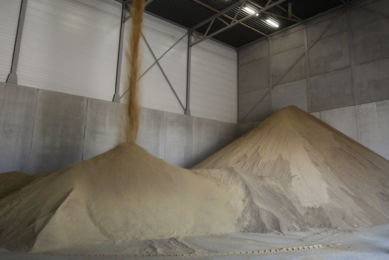Can the US reach 30 p/s/y? – part 1

In an attempt to discover if the US is capable of reaching 30 piglets per sow per year (p/s/y), Purina Animal Nutrition did a series of interviews with three industry experts that verify the goal is attainable. This is the first in that series. The interview is with Dr Brenda De Rodas, director of swine research at Purina Animal Nutrition Center, Gray Summit, Mo.
The number of full potential pigs a sow can produce per year is an indicator of a facility’s productivity and throughput power. The figure, demonstrated as pigs per sow per year (p/s/y), is a combination of the genetic progress of a herd, management focus and expertise of the employees, and sow nutrition and care provided through gestation and lactation.
Across the globe, there is large variation in p/s/y levels. Producers in the United States are currently aiming toward the goal of 30 p/s/y, with genetic capabilities of the US swine herd nearing that level.
Nutrition companies in the United States have joined forces to help producers meet genetic capabilities through the Feeding for 30 program. By means of discussions, forums and shared advice, Purina Animal Nutrition, Zinpro Corporation and DSM Nutritional Products are helping producers to improve sow productivity by increased attention to sow nutrition and management.
Producers involved in the program that have neared, achieved and maintained this level have done so by perfecting a combination of management factors. We recently sat down with managers of three successful US swine operations to discuss their road to achieving their production goals.
Here, we share experiences and advice from Brenda De Rodas.
Q: Tell us a little about your operation and the work that you do.
A: Purina Animal Nutrition Center has a 200-sow unit built on Newsham Choice Genetics. Our goal is to produce at least 400 pigs every five weeks; we use 95 to 98 percent of those pigs for our nursery and grow-finish research. All sows are monitored for production and body condition through all stages. We maintain a facility similar to the industry so we can test and compare ongoing practices to new nutrition products and programs and management strategies.
Q: What goals are you striving to achieve and what are your current production levels?
A: We are a research facility with good production records. Though our goal is research over production, we need to have good production in order to compare with other units across the country. We know we have the capability of reaching 30 p/s/y but our rations and management strategies vary depending of the research project. In our current studies, we are looking for ways to improve: sow productivity, feed intake during lactation, the number of full potential pigs weaned per sow, pig survival rates and birth and weaning weights. Our ultimate goal is to use this research to develop products and programs that will help U.S. producers improve productivity.
Q: How have you improved sow productivity in your facility?
A: We work to minimise the weight that the sow loses during lactation and to achieve a body condition score (BCS) of 3 at farrowing on a 5-point scale. We do this by limiting energy intake in gestation and providing ad libitum feed throughout lactation. Full-feeding in lactation has shown the most improvements in milk production and helps our sows rebreed sooner. My team is very detail oriented and does a great job in managing the breeding herd.
Q: What role does sow nutrition play in achieving the goal of 30 p/s/y?
A: To keep sows in ideal body condition, we feed two rations to the sows. In gestation, the nutrient requirements are lower, so our sows receive 4 to 6 pounds of feed per head per day. In lactation, however, nutrient demands are much higher. The main objective for nutrition of the lactating sow is to minimize the negative nutrient balance while optimizing milk production, so we offer ad libitum feed. On average, our sows eat between 14 and 15 pounds per head per day during lactation. This level helps her care for the current litter and prepare for her next parity.
Q: Tell us about your current sow ration.
A: In both gestation and lactation, we have feeders set up that allow us to feed fresh feed every day. In lactation, we feed a corn-soy diet with fat, mineral and vitamin premixes as well as sow feed additives including HealthyEDGE Technology and True Appetizer technology.
In gestation, we limit-feed and control energy intake with a ration high in fiber content; we add soy hulls at 15 to 20 percent of the diet. This helps fill the sow, prevents overconsumption and controls body weight gain.
Q: What additional strategies do you implement to keep your sows productive and in the herd long-term?
A: We pay close attention to the farrowing process with an experienced farrowing management staff. After farrowing, we help the sows start to drink water and eat feed sooner. If the sow is eating and drinking on her own, she will recover quicker from parturition. The environment is also important; we work to maintain a calm and comfortable facility for the sows and the piglets.
The other interviews in this series are to follow:
To learn more about the Feeding for 30 programme, visit www.feedingfor30.com











